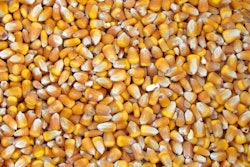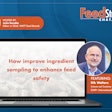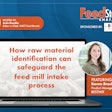
Feed mills are utilizing high cook temperatures in processing equipment to pasteurize ingredients and meet the strong demand for feed that is free from toxins and pathogens, such as Salmonella.
Read the entire report about mitigating pathogens and toxins exclusively in the March issue of Feed Strategy.
Eliminating pathogens in feed has been a main concern for many years, but the issue has taken on a new dimension with tighter Food Safety Modernization Act (FSMA) regulations; the movement away from using chemicals in feed, such as the European Union’s ban on formaldehyde; and the pressure to end feed-grade antibiotics.
Studies show that cooking ingredients with processing equipment at a high temperature for a specific amount of time reduces pathogens. The specific temperature and amount of time depends on the size and density of the pellet.
“We have undertaken a series of scientific studies to determine the reduction level of most heat-resistant Salmonella strains in the conditioner,” says Gerardo Morantes, Bühler Inc. director of food safety. “We can select suitable conditions which will result in a reduction level of bacteria, with good pellet quality and optimal energy use — balancing feed safety and efficiency.”
Conditioners inject steam at a specific pressure that helps the feed mash reach a high temperature — above 80 to 85 C. The specific relationship between time and temperature to completely eradicate a pathogen or toxin varies depending on the ingredients and pellet density. Achieving this time and temperature relationship provides a safe feed that also meets the U.S. Food and Drug Administration's (FDA) food safety and quality requirements for food producing animals.
In addition to using processing equipment as a “kill step,” manufacturers have also designed machines that are used in addition to ensure that feed is properly pasteurized.


















